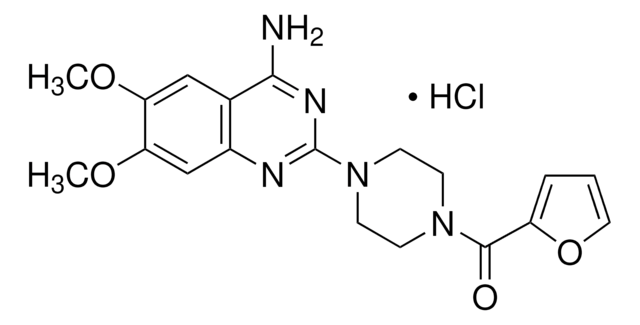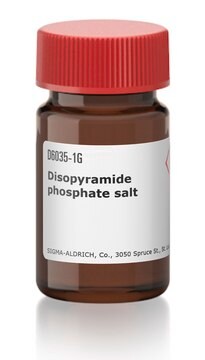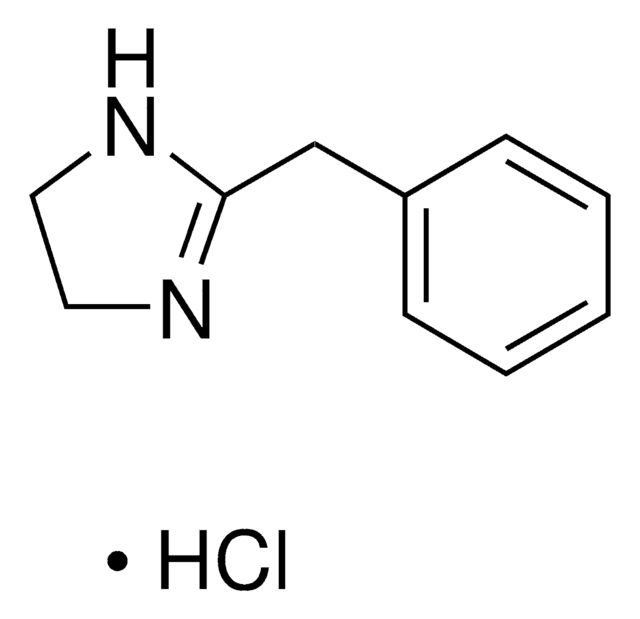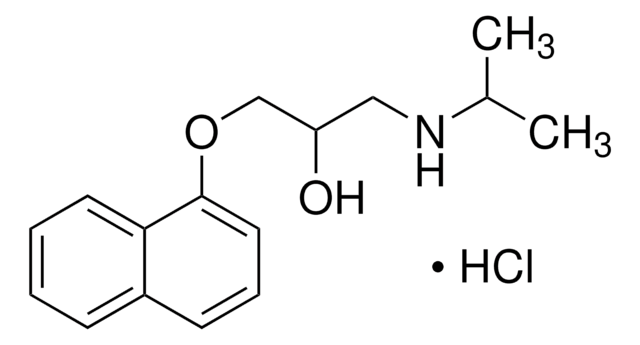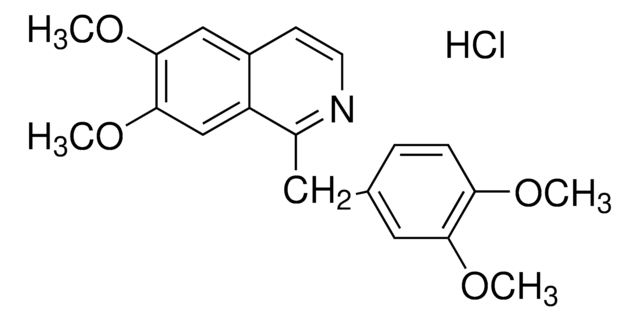P0026
Pilsicainide hydrochloride
≥98% (HPLC)
Sinónimos:
N-(2,6-Dimethylphenyl)tetrahydro-1H-pyrrolizine-7a(5H)-acetamide hydrochloride, Pilzicainide hydrochloride, SUN 1165
About This Item
Productos recomendados
Quality Level
assay
≥98% (HPLC)
form
powder
storage condition
desiccated
color
white to beige
solubility
deionized water: >5 mg/mL
storage temp.
room temp
SMILES string
Cl.Cc1cccc(C)c1NC(=O)CC23CCCN2CCC3
InChI
1S/C17H24N2O.ClH/c1-13-6-3-7-14(2)16(13)18-15(20)12-17-8-4-10-19(17)11-5-9-17;/h3,6-7H,4-5,8-12H2,1-2H3,(H,18,20);1H
InChI key
NZOSVDHCTCLGEB-UHFFFAOYSA-N
Application
- to study its effects on electrophysiological parameters in guinea pig pulmonary vein preparation
- to study its effects on Ca2+ release and arrhythmic events in Andersen-Tawil syndrome induced pluripotent stem cells (ATS-iPSC)-derived cardiomyocytes
- to study its electrophysiological effects on the guinea pig atrium
Biochem/physiol Actions
Features and Benefits
signalword
Danger
hcodes
Hazard Classifications
Acute Tox. 3 Oral
Storage Class
6.1C - Combustible, acute toxic Cat.3 / toxic compounds or compounds which causing chronic effects
wgk_germany
WGK 3
flash_point_f
Not applicable
flash_point_c
Not applicable
Certificados de análisis (COA)
Busque Certificados de análisis (COA) introduciendo el número de lote del producto. Los números de lote se encuentran en la etiqueta del producto después de las palabras «Lot» o «Batch»
¿Ya tiene este producto?
Encuentre la documentación para los productos que ha comprado recientemente en la Biblioteca de documentos.
Artículos
Voltage-gated sodium channels are present in most excitable cell membranes and play an important role in generating action potentials.
Contenido relacionado
Discover Bioactive Small Molecules for ADME/Tox
Nuestro equipo de científicos tiene experiencia en todas las áreas de investigación: Ciencias de la vida, Ciencia de los materiales, Síntesis química, Cromatografía, Analítica y muchas otras.
Póngase en contacto con el Servicio técnico
